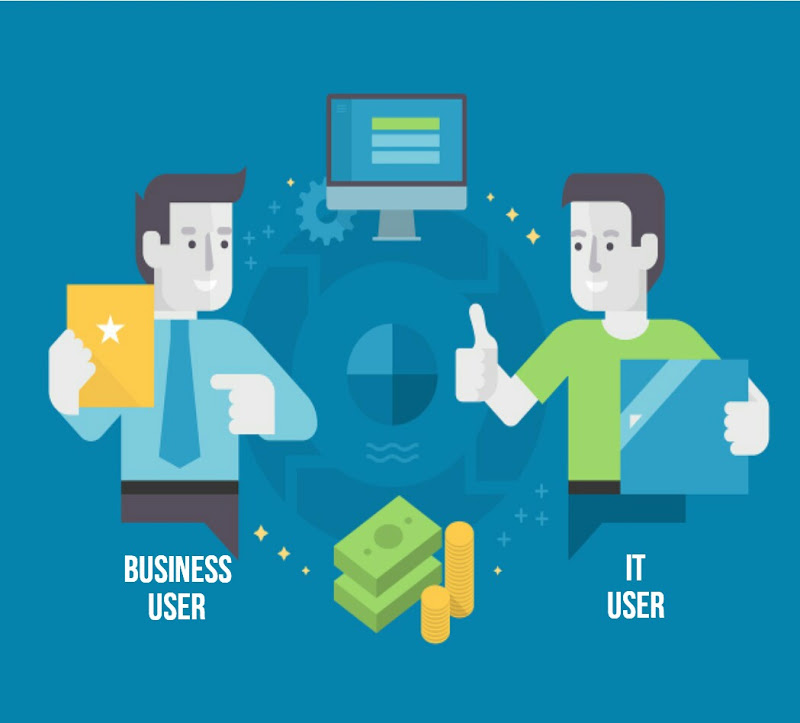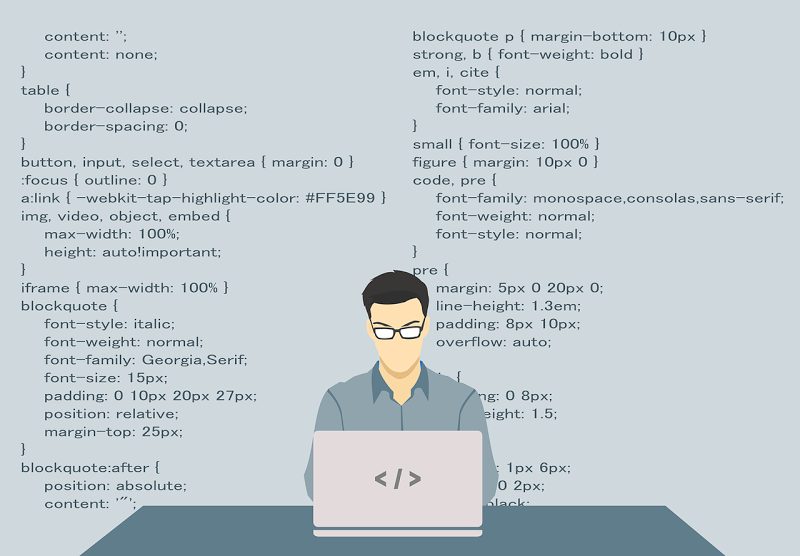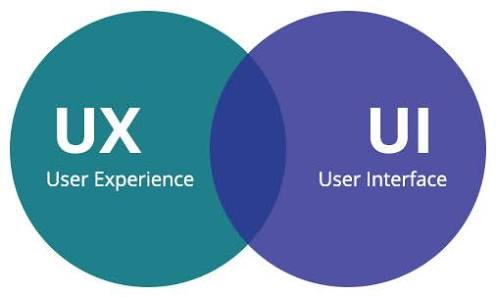10 Misconceptions About Rapid Application Development You Need to Do Away With
Have you noticed the fuss that's been going on lately about Rapid Application Development (RAD)? A lot of people seem to be talking about it these days. While that's generally good for the industry, there's a problem.
Ready? Let's jump right into it:


There are two schools of thought here…
The first one argues that rapid application development is a technique specifically reserved for business users to be able to build apps more easily. The other school of thought believes that RAD is designed solely for pro developers to make their work easier.
While these ideologies are partially true (because RAD makes life easier for both IT and business users), RAD is built for both, not just one of the two groups.
RAD platforms with no-code/low-code functionality provide extremely easy to use drag-and-drop visual development environment for both business users and professional developers, which means the idea behind RAD is to make it possible to develop apps with minimal technical skills in less time.

Some people are of the opinion that rapid application development is for startups, and not for big organizations. But that's incorrect — big businesses do use RAD but may not tell you.
If you are a big business, there are scads of benefits you can get from rapid application development. For instance, your development and testing time can greatly be cut down due to the reuse of patterns.

Well, this assumption is not just delusional but also very finite in scope. Imagine getting told that those who can walk should always walk instead of using cars.
Just as cars make movement easier and faster, RAD tools do the same when it comes to development.
People who can code will benefit a lot from RAD and are probably the best people to make the best use of RAD technology, as they have loftier technical skills and understand development better. In addition, they can easily create add-ons, plugins, and other relevant components to create apps that deliver great experience and meet business needs more intuitively.

Yes, it's true that professional apps usually require primo security and decent DB design. And in traditional development, the incorporation of these elements are usually handled by expert developers.
With the arrival of RAD, some people still think that achieving professional security and DB design requires expert intervention. But that's totally untrue.
Rapid application development tools come with new technologies including drag-and-drop form builders, automatic table creations, configurable security, and so on. From a security perspective, platforms like Joget Workflow have been scanned and rated by industry leading security services such as HP Fortify On-Demand. With this, non-coders — business users, product managers, and citizen developers — can easily and quickly create apps with top-of-the-line security and automated database design.

You know, one of the reasons why some developers are at sixes and sevens as to whether or not to adopt RAD methodology is because they erroneously think that RAD will take their job and leave them with nothing.
 This again is caused by misinformation. A 21st century RAD tool should be able to integrate your applications with other business tools.
This again is caused by misinformation. A 21st century RAD tool should be able to integrate your applications with other business tools.
For instance, Joget Workflow makes it extremely easy to securely connect your enterprise apps with third-party tools via APIs in a reliable way. Plugins can be downloaded from the Joget Marketplace or custom-built by developers. Business users can in turn use these plugins inside an app without having to write a line of code.

So you think rapid application development works just for ‘light’ apps, huh?
Wrong!
While some RAD platforms may not fully support gobs of features, there are those that let you develop apps that are rich in functionality. And some platforms even make it possible for these features to be customized as per business needs.


While some folks think that you can't build major apps with RAD, some others think that the bigger the app idea, the more time it'll take to build it with RAD. They believe there are no limits to the size of your idea but that the real hitch comes when you try to incubate that idea.
Yes, it used to take weeks (even months) to develop big apps, but that’s the old way. In the new era, RAD platforms with minimal coding requirement let anyone with an idea to build an app quickly. That's one of the core objectives of RAD — rapid development.
So don't limit your creative imaginations. Instead, get your hands on a worthwhile RAD tool like Joget Workflow and soar.
Tell you what, over at Joget Workflow, we've witnessed situations where usable apps were developed within hours with our RAD platform, and prototypes within minutes.
Arising alongside this rave are misconceptions and myths about the technique.
The problem?
Harboring these misconceptions and myths can cause you to misjudge certain concepts which will ultimately result in you making decisions that can affect your business negatively and slow down your organization's progress.
At Joget Workflow, we've worked with quite a number of really awesome organizations and developers who’re using our RAD technology to create great enterprise apps. We've also come across a number of people who had one of these misconceptions or another.
Today, we want to try to lay some of the confusions to rest. We've put together the top ten of these widely held misconceptions so you're better equipped to make smarter decisions and move your business forward.
The problem?
Harboring these misconceptions and myths can cause you to misjudge certain concepts which will ultimately result in you making decisions that can affect your business negatively and slow down your organization's progress.
At Joget Workflow, we've worked with quite a number of really awesome organizations and developers who’re using our RAD technology to create great enterprise apps. We've also come across a number of people who had one of these misconceptions or another.
Today, we want to try to lay some of the confusions to rest. We've put together the top ten of these widely held misconceptions so you're better equipped to make smarter decisions and move your business forward.
Ready? Let's jump right into it:
Myth #1: RAD is for creating small applications only
Due to the fact that RAD is a development technique for quickly building minimally-coded software applications, some people tend to believe that it's designed to handle only small applications. But that couldn't be farther from the truth.
Of course, small applications can be built with RAD tools, but it's not limited to those kinds of projects. There are several success stories where applications created with RAD have thousands of users and are processing millions of transactions.
Of course, small applications can be built with RAD tools, but it's not limited to those kinds of projects. There are several success stories where applications created with RAD have thousands of users and are processing millions of transactions.
Myth #2: RAD tools are for business users only/RAD tools are for developers only
There are two schools of thought here…
The first one argues that rapid application development is a technique specifically reserved for business users to be able to build apps more easily. The other school of thought believes that RAD is designed solely for pro developers to make their work easier.
While these ideologies are partially true (because RAD makes life easier for both IT and business users), RAD is built for both, not just one of the two groups.
RAD platforms with no-code/low-code functionality provide extremely easy to use drag-and-drop visual development environment for both business users and professional developers, which means the idea behind RAD is to make it possible to develop apps with minimal technical skills in less time.
Myth #3: RAD is for small businesses, not big organizations
Some people are of the opinion that rapid application development is for startups, and not for big organizations. But that's incorrect — big businesses do use RAD but may not tell you.
If you are a big business, there are scads of benefits you can get from rapid application development. For instance, your development and testing time can greatly be cut down due to the reuse of patterns.
Myth #4: If you can code, you should always code instead of using RAD platforms
Well, this assumption is not just delusional but also very finite in scope. Imagine getting told that those who can walk should always walk instead of using cars.
Just as cars make movement easier and faster, RAD tools do the same when it comes to development.
People who can code will benefit a lot from RAD and are probably the best people to make the best use of RAD technology, as they have loftier technical skills and understand development better. In addition, they can easily create add-ons, plugins, and other relevant components to create apps that deliver great experience and meet business needs more intuitively.
Myth #5: You will need expert intervention for professional security and database design
Yes, it's true that professional apps usually require primo security and decent DB design. And in traditional development, the incorporation of these elements are usually handled by expert developers.
With the arrival of RAD, some people still think that achieving professional security and DB design requires expert intervention. But that's totally untrue.
Rapid application development tools come with new technologies including drag-and-drop form builders, automatic table creations, configurable security, and so on. From a security perspective, platforms like Joget Workflow have been scanned and rated by industry leading security services such as HP Fortify On-Demand. With this, non-coders — business users, product managers, and citizen developers — can easily and quickly create apps with top-of-the-line security and automated database design.
Myth #6: Rapid application development will steal the job of the dev
You know, one of the reasons why some developers are at sixes and sevens as to whether or not to adopt RAD methodology is because they erroneously think that RAD will take their job and leave them with nothing.
But hey, don't be misled!
RAD is not a threat to your job security; it's a tool for honing your craft, becoming much more productive, eliminating redundancies, saving time, and making more money in the process.
The world is fast changing and so is the way we work. You don't need to change your job, but rather, change how you work. For developers, it's RAD.
RAD is not a threat to your job security; it's a tool for honing your craft, becoming much more productive, eliminating redundancies, saving time, and making more money in the process.
The world is fast changing and so is the way we work. You don't need to change your job, but rather, change how you work. For developers, it's RAD.
Myth #7: RAD applications cannot be integrated with other business tools
For instance, Joget Workflow makes it extremely easy to securely connect your enterprise apps with third-party tools via APIs in a reliable way. Plugins can be downloaded from the Joget Marketplace or custom-built by developers. Business users can in turn use these plugins inside an app without having to write a line of code.
Myth #8: RAD platforms cannot support lots of features
So you think rapid application development works just for ‘light’ apps, huh?
Wrong!
While some RAD platforms may not fully support gobs of features, there are those that let you develop apps that are rich in functionality. And some platforms even make it possible for these features to be customized as per business needs.
Myth #9: You can't create sterling UI/UX using RAD tools
Professional apps built using traditional methods usually have compelling user interface/experience and involve senior front end developers who are adept at HTML, CSS, and Javascript. Some people think creating such UI/UX is only possible with the manual, traditional method.
But here's the kick:
Great UI/UX is achievable with rapid application development methodology.
With RAD tools that have visual development capabilities, out of the box templates can replace the immediate need for UI/UX experts; and point-by-point adjustments can then be done where necessary.
But here's the kick:
Great UI/UX is achievable with rapid application development methodology.
With RAD tools that have visual development capabilities, out of the box templates can replace the immediate need for UI/UX experts; and point-by-point adjustments can then be done where necessary.
Myth #10: It takes time to build big apps
While some folks think that you can't build major apps with RAD, some others think that the bigger the app idea, the more time it'll take to build it with RAD. They believe there are no limits to the size of your idea but that the real hitch comes when you try to incubate that idea.
Yes, it used to take weeks (even months) to develop big apps, but that’s the old way. In the new era, RAD platforms with minimal coding requirement let anyone with an idea to build an app quickly. That's one of the core objectives of RAD — rapid development.
So don't limit your creative imaginations. Instead, get your hands on a worthwhile RAD tool like Joget Workflow and soar.
Tell you what, over at Joget Workflow, we've witnessed situations where usable apps were developed within hours with our RAD platform, and prototypes within minutes.
And things are getting even more exciting as we're looking to roll out our next major version.
Joget Workflow v6 is coming with lots of upgrades with special focus on user experience, mobility, maintainability, and performance. It'll make building an app super easy, with minimum time and coding requirements.
We hope this article has helped to clear some of the confusions around rapid application development. Please feel free to leave your thoughts and questions in the comment section below.
Joget Workflow v6 is coming with lots of upgrades with special focus on user experience, mobility, maintainability, and performance. It'll make building an app super easy, with minimum time and coding requirements.
We hope this article has helped to clear some of the confusions around rapid application development. Please feel free to leave your thoughts and questions in the comment section below.

.png)

.png)

Comments
Post a Comment